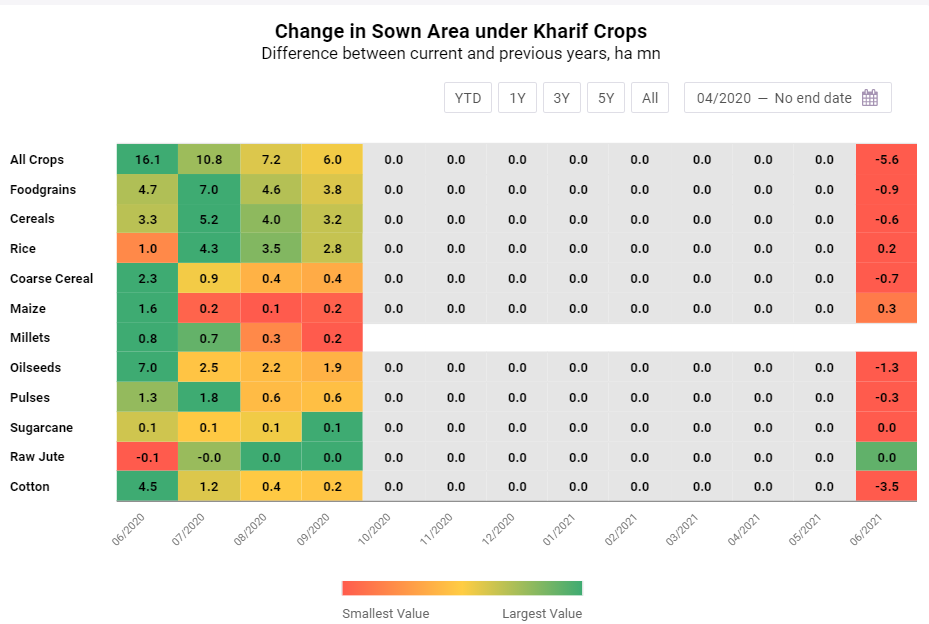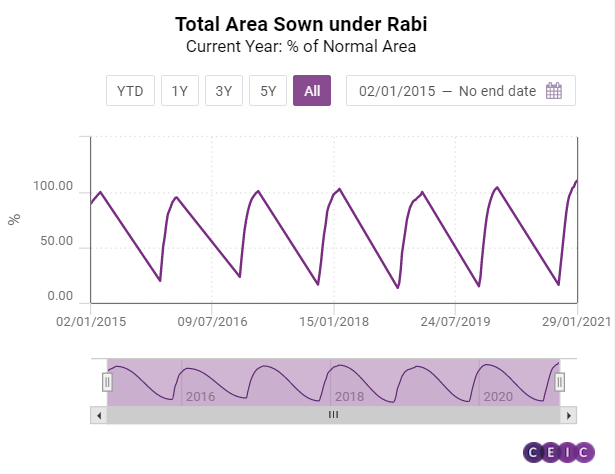
The Indian economy remains predominantly agrarian, with almost 70% of all households engaged in the sector.
Agriculture is a key provider of livelihood, and despite the evolution of the sector, a large part of the final yield is dependent on factors of chance, such as good rainfall. There are measures to help reduce these risks such as good irrigation facilities and financial protection to farmers against crop failure. However, a drop in the yield can pose a threat to the food security of the country, and also adversely affect the economy at a macro level. Therefore, high-frequency data on crop sowing and water resources can play a crucial role in monitoring the grassroots and ensuring an effective policy response.
India’s crop year starts in July and ends in June, with two main sowing seasons. The first one is the Kharif crop season that starts sowing around May-June and lasts until September, and the second is the Rabi crop season, for which sowing starts around November and lasts through the whole of winter until about February. The sowing data is reported by the Department of Agriculture and Cooperation by categories and specific items such as food grains, jute, and sugarcane, among others.

One of the key observations that came across from this data is that crop sowing increased by a record amount after the pandemic started in India. The reason behind this phenomenon was the large-scale reverse migration of daily wage earners from cities to rural regions, which translated into a greater number of hands available for farm work. The total area sown under Kharif was 104.3% of the normal area at the end of the sowing season in September, while the area sown under Rabi was 110.4% of the normal area at the end of sowing season in January.

Resultantly, the advance estimates of agricultural production show a substantial increase for almost all crops. Some of the crops, such as rice and groundnut, are expected to achieve record levels of production. However, the Kharif sowing in June 2021 started off lower than in 2020, on account of the normalization of economic activity coupled with record-high sowing in the previous year. On July 23, 2021, 67.2% of the normal area had been sown, which is comparable to numbers prior to 2020.

Sign in to access all datasets for this insight piece here. Alternatively, you can learn more about our Global Database - a source of information for everything you need to know, housing knowledge on developed and developing markets around the world.
.png?width=160&name=ceic-logo-Vector%20logo%20no%20tagline%20(002).png)
